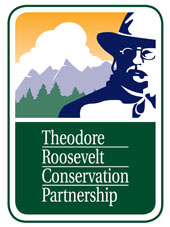Sportsmen, conservationists, and fishing guides suggest ways to enhance conditions for rainbow trout and native fish downstream


Flagstaff, AZ -(AmmoLand.com)- To address concerns over an unstable rainbow trout population in northwest Arizona’s Lees Ferry, a coalition of conservation and sportsmen’s groups and Marble Canyon fishing guides has submitted a list of recommendations to the federal and state agencies responsible for maintaining and improving the blue-ribbon fishery.
The recommendations will be provided to the Bureau of Reclamation and National Park Service as they develop an environmental impact statement (EIS) for the adoption of a long-term experimental and management plan to determine Glen Canyon Dam operations and river restoration actions for next 15 to 20 years.
The coalition—which includes the Theodore Roosevelt Conservation Partnership, Trout Unlimited, the International Federation of Fly Fishers, Northern Arizona Fly Casters, Arizona Fly Casters, Desert Fly Casters, Anglers United, the Arizona Sportsmen for Wildlife Conservation, and Marble Canyon guides and businesses—delivered the report titled “Lees Ferry Recreational Trout Fishery Management Recommendations: The voice of Lees Ferry recreational anglers, guides, and businesses” at the meeting of the Glen Canyon Dam Adaptive Management Work Group in Tempe, Arizona, yesterday. This group advises the Secretary of the Interior on matters related to the operations of Glen Canyon Dam.
Currently, dam operations have direct and indirect effects on rainbow trout in the 16-mile stretch of the Colorado River between Glen Canyon Dam and Marble Canyon—an area commonly referred to as Lees Ferry. Completion of the dam in 1964 created a unique tailwater rainbow trout fishery that has grown in importance and reputation locally, regionally, and nationally. But varying water releases from the dam are currently affecting the production and diversity of insects in the river, the survival of young trout, and the growth and condition of adults.
The trout in Lees Ferry have experienced several significant population swings over the years, which has been bad news for local guiding and lodging businesses that depend on a reliable sport fishery.
“Currently, the Lees Ferry trout fishery is ecologically unstable,” says John Hamill, Arizona field representative for the Theodore Roosevelt Conservation Partnership. “Rainbow trout are exhibiting strong natural recruitment, but these populations aren’t fully supported by the amount and diversity of food in the river. Scientific studies also suggest that food supplies are also limiting to native fish populations downstream in Grand Canyon National Park.”
“Our goal is to make sure the trout fishery gets a fair shake in the EIS process,” Hamill says.
Here’s a summary of the recommendations:
- Establish a more diverse and stable aquatic food base by experimenting with more stable flow regimes to bring back bigger bugs, like mayflies, stoneflies, and caddis flies. A more diverse aquatic food base will also benefit the native fish community and other wildlife in the Colorado River corridor.
- Conduct high-flow releases in the spring to improve the aquatic food base and enhance trout spawning and recruitment when needed.
- Test the use of flows to manage trout in the Lees Ferry reach and reduce downstream migration. This could help minimize competition with and/or predation of endangered humpback chub.
- Implement a water temperature control device that has the capacity to release both cold and warm water from the Glen Canyon Dam. Recent studies suggest that the amount of water in Lake Powell will likely decrease in the future as a result of increased water demands and climate change, leading to warmer water releases from the dam. This would seriously impact the Lees Ferry trout fishery and lead to an invasion of cool- and warm-water fish which would seriously impact native fish in Grand Canyon National Park.
- Establish re-stocking and environmental compliance protocols for responding to potential catastrophic losses of the rainbow trout population in Lees Ferry.
- Create action strategies to reduce or avoid the potential effects of poorly-oxygenated water passing through the reservoir. Though a rare occurrence, these conditions can pose a direct and immediate hazard to rainbow trout in Lees Ferry.
These recommendations aim to boost the Lees Ferry fishery without detriment to downstream resources.
“Our recommendations will improve the quality of the trout fishery and benefit many other Colorado River resources below Glen Canyon Dam,” says John Jordan, conservation chair for Arizona Trout Unlimited. “We expect these steps to support the recovery of the endangered humpback chub, the improvement of camping beaches in Grand Canyon National Park, the development of hydropower generation, and the protection of archaeological sites.”
Read the full report here.
- For more information on the TRCP visit our website.
- Connect with us on Facebook.
- Follow us on Twitter.
About Theodore Roosevelt Conservation Partnership:
Inspired by the legacy of Theodore Roosevelt, the TRCP is a coalition of organizations and grassroots partners working together to preserve the traditions of hunting and fishing.
For more information on the TRCP, please visit our website at www.TRCP.org.
